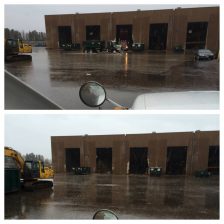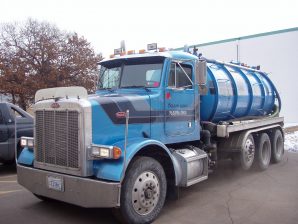A plugged storm drain can cause serious issues for businesses, residential and industrial areas. Most plugged storm drains aren’t noticed until your building is flooding and it’s too late. preventing a plugged storm drain is easy. Remove built up debris before a plugged storm drain occurs!

What Are Storm Drains?
A storm drain is a drain designed to carry rainwater that is gathered over an area water cannot penetrate. Rainwater is diverted to a catch basin or a curb and gutter system. Once in the catch basin the storm water will follow piping to distinct types of watersheds (rivers, lakes, and ponds).
What causes plugged storm drains?
Storm drains gather water from a large area such as parking lots, streets, or paved lots. While most of these areas are paved and cleaned periodically, they still collect debris. Debris can be anything from sand, leaves, trash etc. Parking lots and roadways are the largest contributors to plugged storm drains. Although these areas are cleaned periodically, they still gather debris. Overtime this debris is slowly washed into the storm sewer and begins to build up slowly reducing the overall volume in which the storm sewer can handle. Once enough build up has accumulated the storm sewer may become overwhelmed during a rainfall event thus causing a backup to occur.
When should I clean my plugged storm drain?
Visually inspect your storm sewer catch basins twice per year for any signs of accumulated sediment or debris (Spring and Fall). While you may not be able to see inside the sewer line itself, noticing trash or leaves in the catch basin may indicate that you are about to have a plugged storm drain. If you notice standing water in your parking lot during a rainfall event it may indicate a plugged storm drain. If you notice any of these things immediately call a professional and have your storm sewer inspected.



